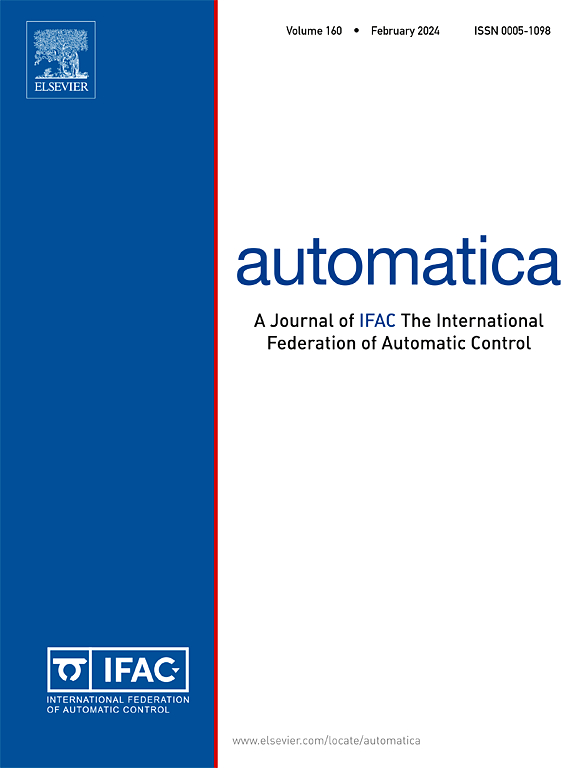Hierarchical supervisory control of networked and cyber-attacked discrete-event systems
IF 5.9
2区 计算机科学
Q1 AUTOMATION & CONTROL SYSTEMS
引用次数: 0
Abstract
In standard supervisory control of discrete-event systems, partial (incomplete) observations are given by deterministic functions such as natural projections, which erase unobservable events, or masks, which can represent indistinguishable events, where two or more different events yield the same observation. However, communication channels in modern technological systems are not always reliable and can be attacked by malicious external agents. In that case, the plant observations obtained by the supervisor may not be deterministic, e.g., due to delays and losses, or external attacks. This paper considers a unified supervisory control framework with set-valued (nondeterministic) observations and proposes a simplified version of nondeterministic observability, together with a generalized normality. It shows how the results of hierarchical control can be extended to the networked and cyber-attacked discrete-event systems at the same time.
网络化和网络攻击离散事件系统的分层监控
在离散事件系统的标准监督控制中,部分(不完全)观察是由确定性函数给出的,如自然投影,它可以消除不可观察的事件,或掩模,它可以表示不可区分的事件,其中两个或多个不同的事件产生相同的观察。然而,现代技术系统中的通信通道并不总是可靠的,并且可能受到恶意外部代理的攻击。在这种情况下,主管获得的工厂观察可能不确定,例如,由于延迟和损失,或外部攻击。本文考虑了集值(不确定性)观测的统一监督控制框架,并提出了非确定性可观测性的简化版本,以及广义正态性。说明了层次控制的结果可以同时推广到网络化和网络攻击的离散事件系统。
本文章由计算机程序翻译,如有差异,请以英文原文为准。
求助全文
约1分钟内获得全文
求助全文
来源期刊

Automatica
工程技术-工程:电子与电气
CiteScore
10.70
自引率
7.80%
发文量
617
审稿时长
5 months
期刊介绍:
Automatica is a leading archival publication in the field of systems and control. The field encompasses today a broad set of areas and topics, and is thriving not only within itself but also in terms of its impact on other fields, such as communications, computers, biology, energy and economics. Since its inception in 1963, Automatica has kept abreast with the evolution of the field over the years, and has emerged as a leading publication driving the trends in the field.
After being founded in 1963, Automatica became a journal of the International Federation of Automatic Control (IFAC) in 1969. It features a characteristic blend of theoretical and applied papers of archival, lasting value, reporting cutting edge research results by authors across the globe. It features articles in distinct categories, including regular, brief and survey papers, technical communiqués, correspondence items, as well as reviews on published books of interest to the readership. It occasionally publishes special issues on emerging new topics or established mature topics of interest to a broad audience.
Automatica solicits original high-quality contributions in all the categories listed above, and in all areas of systems and control interpreted in a broad sense and evolving constantly. They may be submitted directly to a subject editor or to the Editor-in-Chief if not sure about the subject area. Editorial procedures in place assure careful, fair, and prompt handling of all submitted articles. Accepted papers appear in the journal in the shortest time feasible given production time constraints.
 求助内容:
求助内容: 应助结果提醒方式:
应助结果提醒方式:


